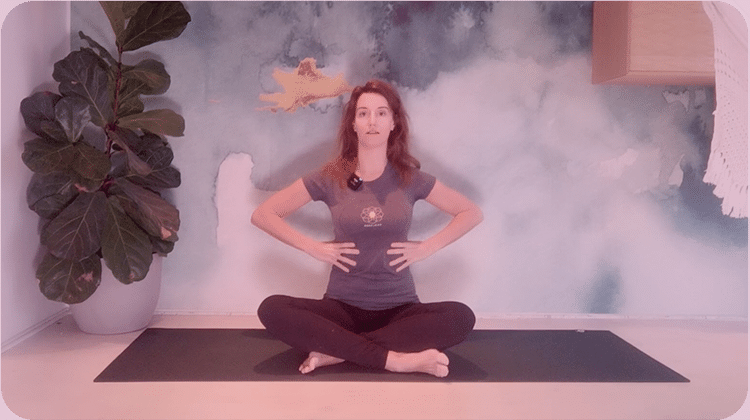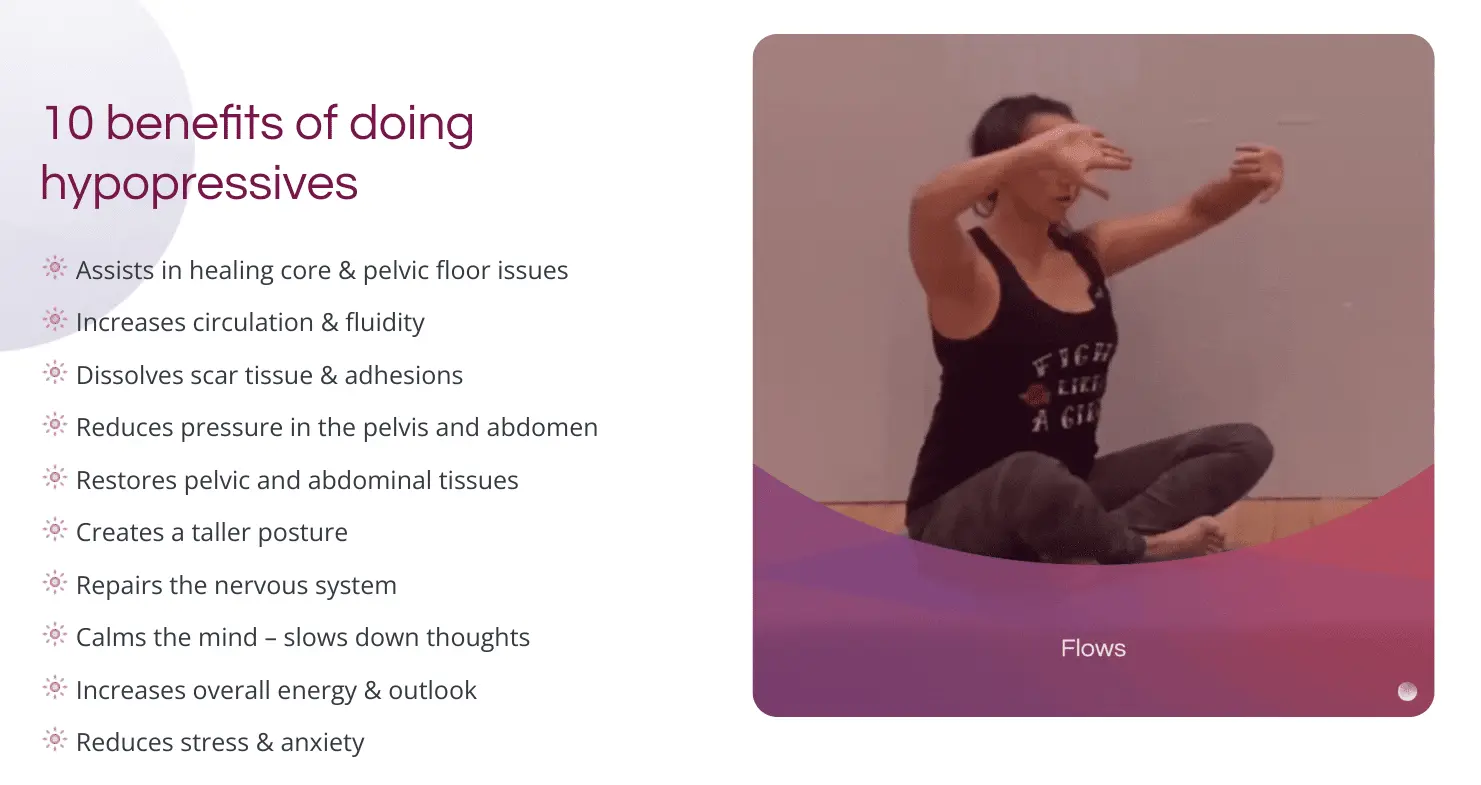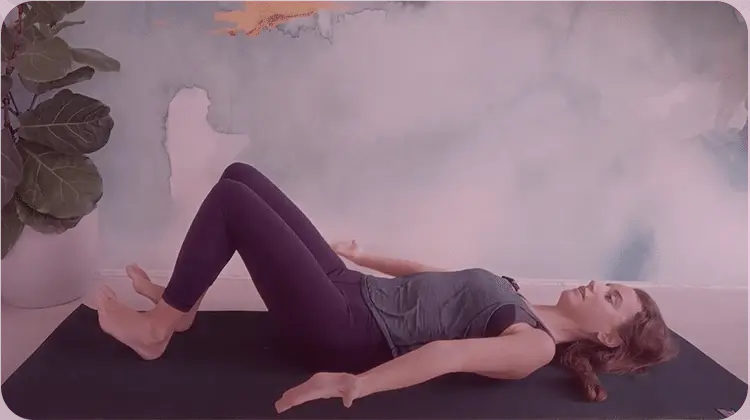Hypopressive exercises for pelvic floor: What’s all the hype about?
- December 21, 2022
- Pelvic Floor
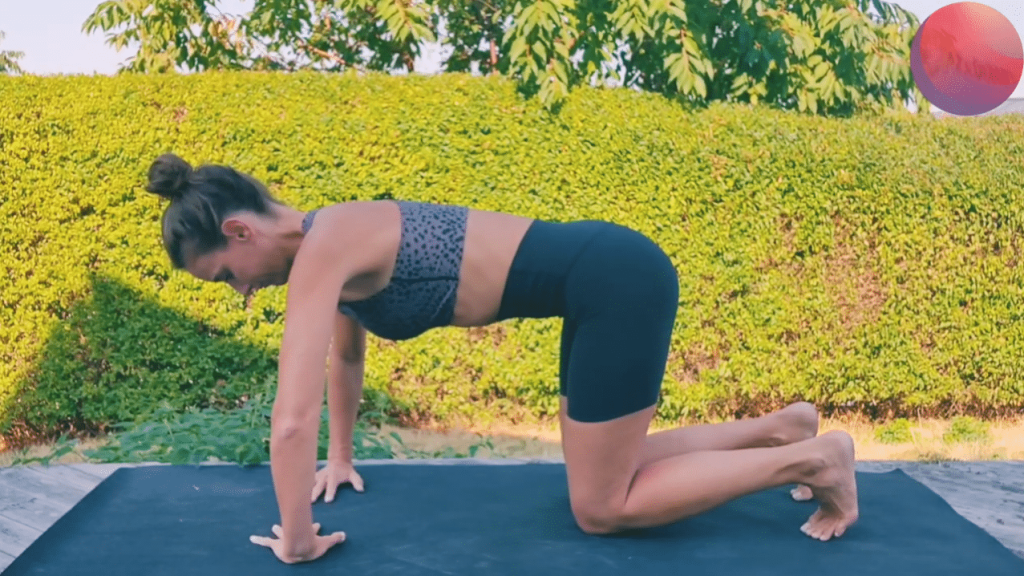
You may have heard that Kegels are ‘out’ and Hypopressives are ‘in’.
Or maybe you haven’t heard this yet, so allow me to explain.
As more and more women around the world experience pelvic floor dysfunction, they are turning to Kegels. Yet, many of these women aren’t finding relief. And in some cases, symptoms become worse after using Kegels.
This is why Hypopressives are becoming all the hype.
You see, after being let down by the “go-to solution” for pelvic issues (myself included), women started looking for alternative solutions.
Fortunately, after doing a few Google searches, they discovered Hypopressives – powerful and effective exercises designed to heal pelvic floor dysfunction.
They read that numerous women who practiced these exercises were able to reverse symptoms like prolapse, incontinence, heaviness, and more.
So what exactly are hypopressive exercises for pelvic floor you ask, and what makes them so special?
Let’s get into that now!
What are Hypopressive exercises?
Hypopressives are a low-pressure fitness training technique. They include a simple set of posture and breathing techniques. And they work in a progressive sequence – this part is key.
Meaning, you start with posture & alignment exercises first, then lateral breath work, then apnea breath holds. These are the foundations of Hypopressives.
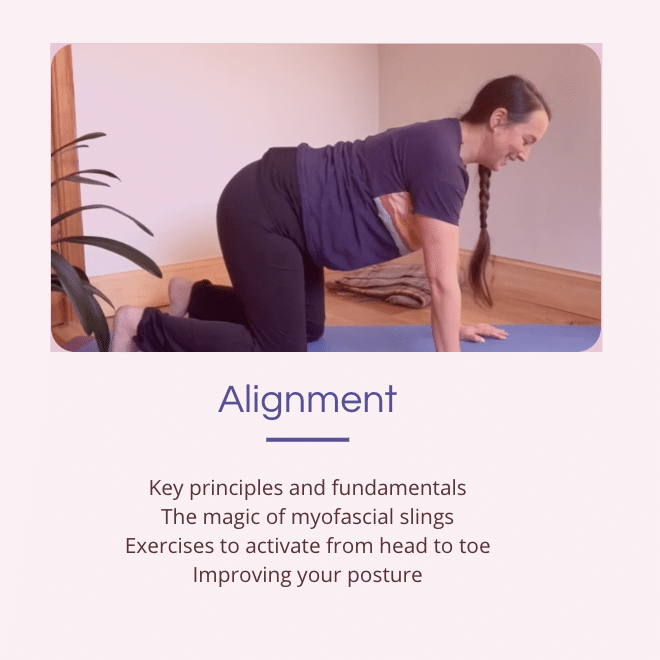
The reason you start with posture exercises first is that better posture helps manage pressure. When pelvic floor dysfunction is present, it indicates that there’s too much pressure (and tension) in the pelvic floor.
So getting immediate relief from pressure is essential. Then the breath work gets added in slowly. It has to occur slowly because Hypopressives breathing involves the diaphragmatic and intercostal muscles, located in and around the rib cage.
Since we don’t use these muscles often, it takes time to build up their strength. As the saying goes – slow and steady wins the race.
Finally, after mastering the foundations, you are ready to practice Hypopressive flows – exercise sequences that combine the postures and breathwork.
As you can see, there is a very specific order to follow when practicing Hypopressives. This is not done for the sake of being strict, it’s done for safety (and logical) reasons.
So, to make sure I fully cover the topic of safety, I want to address this question I get asked.
Can I just practice Apnea?
There’s only one way to answer this question, and it’s “no.”
It’s essential to practice Hypopressives in this exact order – postural alignment, lateral breath, and then apnea.
You never want to skip ahead and do the apnea breath first because doing so can make symptoms worse.
This is the big risk factor of practicing Hypopressive exercises with free YouTube videos. You don’t always get the full story or see the full picture. I will explain more in this video.
Sadly, many women I work with tried Hypopressives on their own by following YouTube videos, and the symptoms worsened.
Again, safety is key with Hypopressives as with many other exercises. Without getting feedback on how you’re practicing the exercises, it’s hard to know if you’re practicing them safely and correctly.
Ok, so now that we’ve covered that, let’s dive deeper into the breathing components of Hypopressive exercises.
Hypopressive breathing exercises
The two main types of breathing exercises we do in Hypopressives are the lateral and apnea breaths.
What is lateral breathing?

By definition, lateral breathing is when you breathe from the lower part of your rib cage. You expand your rib cage by breathing in all directions – the front, sides (diagonally), and back.
Breathing in this way activates the pelvic floor holistically. How so?
Well, activating your diaphragmatic muscles directly activates your pelvic diaphragm because the two are connected.
What does that mean exactly?
Well, when you practice lateral breathing, it activates the nerve endings and fascia in your pelvic floor. This activation helps reduce pressure and dissolve scar tissue in your pelvic floor – aiding the healing process.
Want to try lateral breathing for yourself to see how good it feels? It’s safe to do if this is your first time. Again, it’s just the apnea breath that you don’t want to practice without proper guidance.
With that said, are you ready to join me in this 10-minute guided lateral breathing exercise?
What is the apnea breath exactly?
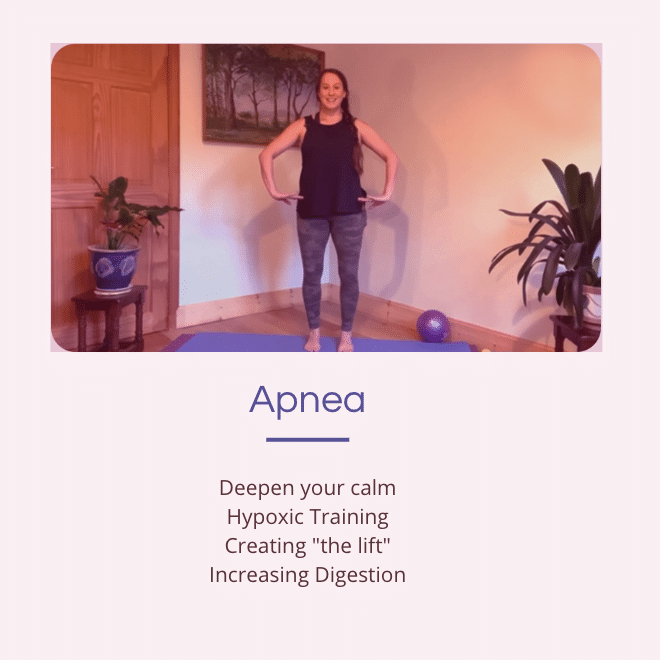
Great question! You’ve heard many references to the apnea breath already, but I haven’t quite elaborated on it yet. So, let’s get into it.
Firstly, it may help to think of the apnea breath as a “breath hold”. The reason for this is that the apnea breath involves a false inhalation.
Here is what I mean by a false inhalation.
During an apnea breath (I’m simplifying here), you breathe in, breathe out, then open up the rib cage like you’re taking an inhalation, but no air comes in.
During this false inhalation, the muscles, fascia, and nerve endings in your diaphragm become activated. This is a new and different experience for the body. Therefore, we start with posture and lateral breath first to get the body “more prepared” to practice apnea.
Check out this video for a more thorough explanation of apnea. It will also remind you why it’s not safe to practice apnea without proper guidance and support.
How do Hypopressive techniques heal pelvic floor dysfunction?
Now that I’ve covered the basics of Hypopressives, let’s get into how and why they’re an effective healing tool.
- Hypopressives by nature, are designed to pull pressure up & out of the pelvic floor. In turn, this makes it easier for your pelvic organs to function properly by creating a “lift”.
- These low-pressure fitness exercises create more fluidity and softness in adhesions and scar tissue. In turn, there is a reduction in tightness and restriction in the pelvic fascia.
- Hypopressives improve your posture and breathing, thereby improving circulation in your body and the pelvic floor. When there is better circulation (i.e. blood flow), nutrients can reach your cells more efficiently. This provides a feeling of satiation (less hunger) and improved digestion. When you have better digestion, you sleep better and poop easier and more often, thereby eliminating toxins. And fewer toxins in your body means more energy to get through your day.
See how amazing Hypopressives are! Although they are targeted for pelvic floor healing, they have so many other health benefits as well.
I’ve elaborated on these three benefits (and detailed some other benefits in another blog article called The Top 6 Hypopressives Benefits You Don’t Want to Miss Out On.
In Summary
Hypopressive exercises for pelvic floor dysfunction are quickly becoming all the buzz. They are coming out of the shadow of Kegels, because kegels are ineffective for most women with pelvic floor dysfunction.
At the same time, Hypopressives are becoming more mainstream because for decades they were only taught in the Spanish language. After being translated into English and now Swedish, more and more women around the world can practice them.
But again, I want to reiterate that it’s essential to practice hypopressives in their correct order. That means postural alignment, lateral breathing, and then the apnea breath.
Secondly, it’s important to have a Hypopressives Trainer guide you through the proper sequence of postures and observe your technique. This way you can feel confident about practicing the exercises safely and correctly.
I understand how hard it can be to find a local trainer near you. And the difficulty of scheduling and driving to appointments when symptoms are really bad.
This is why with the help and expertise of Master Hypopressives Trainer, Abby Lord, we created a safe, on-demand, affordable Hypopressives Training Course.
You can learn more about Hypopressive exercises for the pelvic floor and about this Course by joining any of our FREE Live Hypopressive Webinars.
Secure your spot today by choosing a date and time of your choice to attend the Live Webinar. See you there!
Blog posts you might like:

